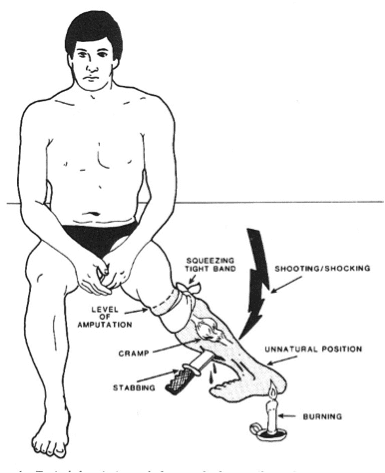Phantom Limb Pain
A common symptom in amputee individuals is phantom pain, experiencing pain in absent limbs. It is reported that the symptoms encompass feelings of burning, cramping, tingling, or stabbing pain. An estimated 90% to 98% of amputees experience these painful episodes (Oocuchida et al. 2015). While the explanation for the symptom is not fully known, it is hypothesized that the brain and spinal cord are slowly adjusting to the loss.
Within the primary somatosensory cortex, a sensory map is responsible for incoming nerve sensations. The brain essentially needs time to reorganize and reroute nerve endings. Different senses such as vision and touch can influence the perception of phantom limb pain. In a study particularly focusing on tactile and vision impact on phantom limb pain, when participants had their eyes open the pain did not lessen. For some, participants experienced dual perception by touching the phantom limb with their eyes closed. All of these sensory symptoms are interconnected which in return has the ability to affect the intensity and quality of phantom limb pain.
https://www.sciencedirect.com/science/article/abs/pii/S0168010215003065
https://academic.oup.com/brain/article-abstract/126/3/579/321219?redirectedFrom=fulltext#

It is interesting that even without a physical limb an individual can still feel pain in that limb. This shows the interconnection between the mind and body allowing for sensory perception to work as a cohesive state.
ReplyDeleteHi,
ReplyDeleteI love your informative post! It most definitely is fascinating how the brain tries to adapt to the loss of a limb. It is also interesting how that adaptation can cause such vivid sensations. I agree that the connection between vision, touch, and perception really shows how interconnected our sensory systems are.